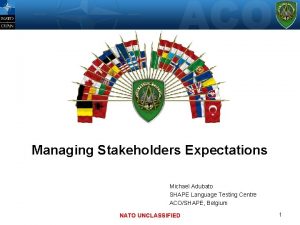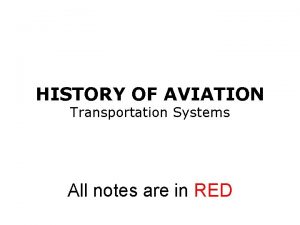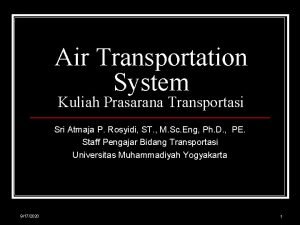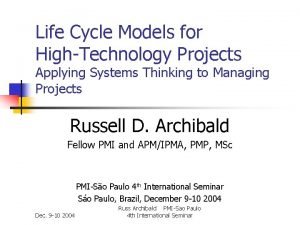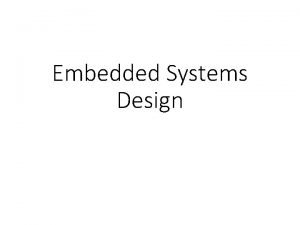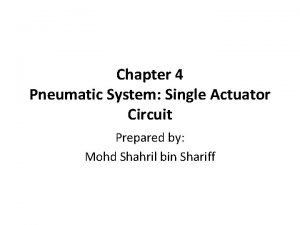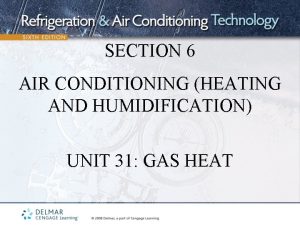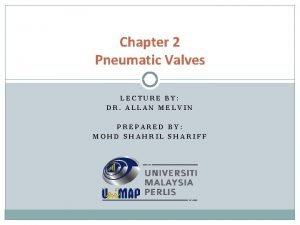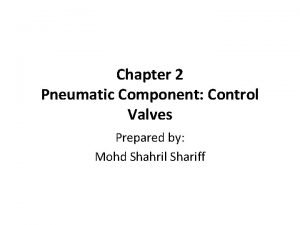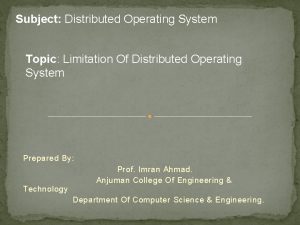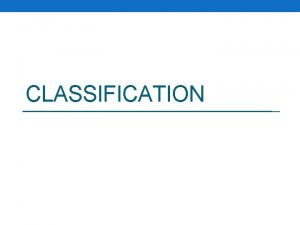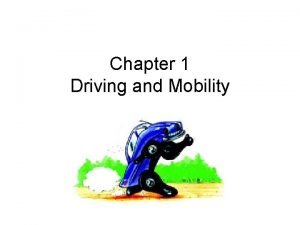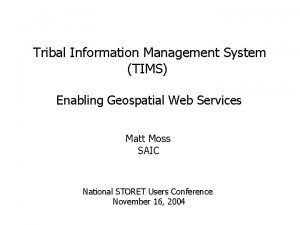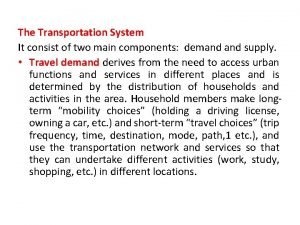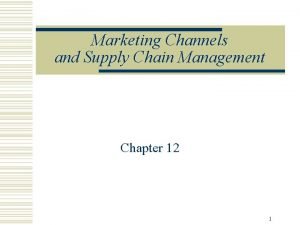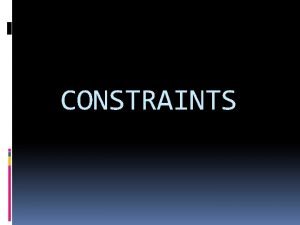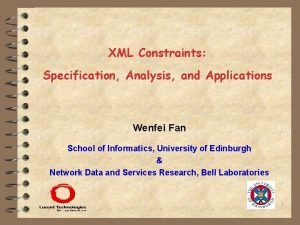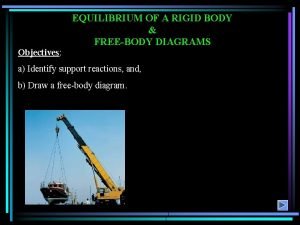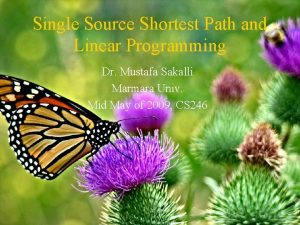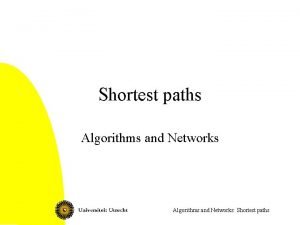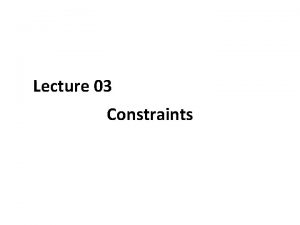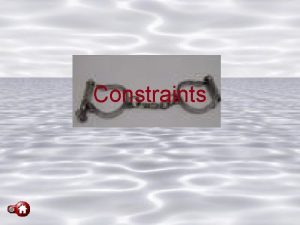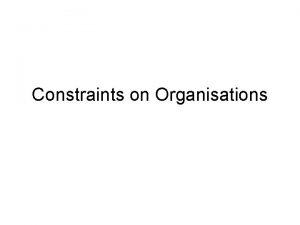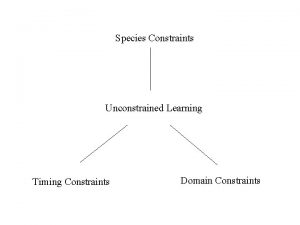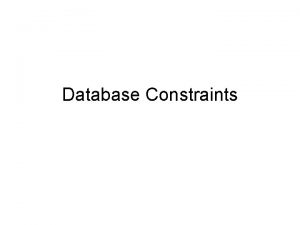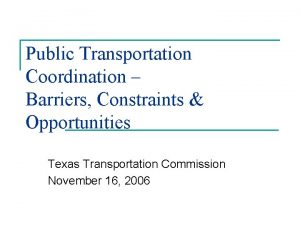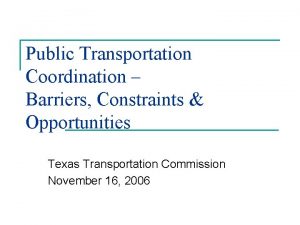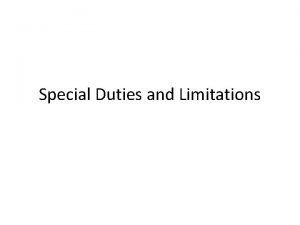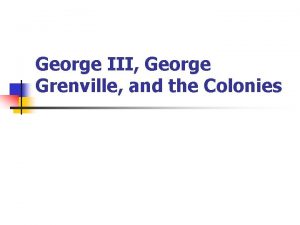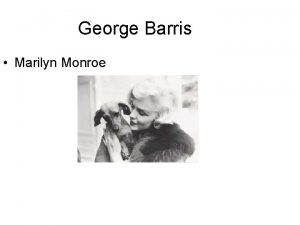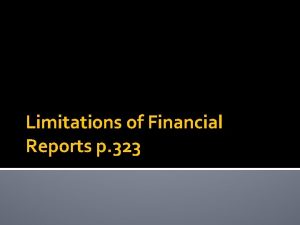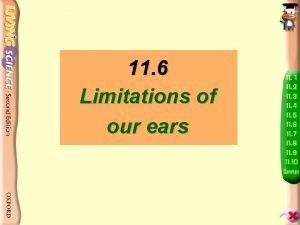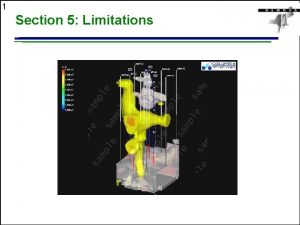Air Transportation System Limitations Constraints and Trends George











![Capacity vs. Delay Penalty Delay IAD Depart Arrivals [3] “ACE 1999 Plan, ” CD-ROM. Capacity vs. Delay Penalty Delay IAD Depart Arrivals [3] “ACE 1999 Plan, ” CD-ROM.](https://slidetodoc.com/presentation_image/8530c0481802bf029ac18e0c54245b39/image-12.jpg)




















- Slides: 32

Air Transportation System Limitations, Constraints and Trends George L. Donohue March 19 -20, Wye Woods Conference Center © George Donohue 2002 George Mason University Transportation Lab

Demand has grown Faster than National Infrastructure Source: DOT Statistics George Mason University

Initial Observations and an Hypothesis u FACTS: n Airspace above Airport Runway Thresholds (Operational Capacity) is a Limited, Nationally Allocateable Commodity n National Airport and Airspace Management Infrastructure growth has seriously lagged behind Growth in Air Transportation Demand n Utilization of this Capacity Commodity is Constrained by Airline Schedule Conflicts, Delay Tolerance, FAA Ground Delay Programs and Aircraft Safety (i. e. Aircraft Spacing) u HYPOTHESIS: n A Do. T Supervised Auction System may be Required to Efficiently allocate Airport Capacity within Delay and Safety constraints George Mason University

Incentives for Operational Improvements and Modernization Key Decision Points u DP 1 NATCA Contract Negotiations and Controller Mass Retirement Threat (Avg. Age=50 + Service=25) ~2007 Termination of Slot Controls - 2007 Sector Congestion and limits of Radio Frequency Spectrum Availability ~ 2010 u DP 2 u DP 3 u Transition Barriers - Ground Based Infrastructure L----M----H Airborne Equipment L----M----H Labor Issues L----M----H Regulation L----M----H Required Culture Change L----M----H Communication Bandwidth L----M----H LACK OF INCENTIVES TO CHANGE !!!! George Mason University

Outline u. Limitations on Air Transportation Capacity u. Safety, Capacity and Delay u. System Network Effects u. Future Security Effects u. Observations u. Future Vision George Mason University

Operational Capacity is a Limited Commodity u C MAX C S i (XG)i Ri {Airports} – K AK(t) {Airspace Management Intervention} =2 AR MAX n S = f ( Safety, ATC , Wake Vortex, etc. ) ~ 0. 6 u AK(t) = (A/CREQUEST – A/CACCEPT) ~ [ 0 to >1, 000] n AK(t) = f ( GDP: Weather, Sector Workload Constraints ) u C AR MAX ~ 64 Arrivals/Hour (set by Runway Occupancy Time) u Ri = Number of Runways at ith Airport u XGi = Airport Configuration Factor at ith Airport u i = 1 to N, where N is approximately 60 Airports u K = 1 to M, where M is typically much less than 100 Sectors George Mason University

Regional Distribution of Airport Infrastructure is Uneven Donohue and Shaver, TRB 2000 George Mason University

Airport Diseconomies of Scale George Mason University

Non-Linear Network Characteristics u NAS is a Highly Non-Linear, Adaptive System n Controller-in-the-Loop 3 Airport Network at 100 operations each + 50 operations increase n AOC-in-the-Loop n Independent Network Schedules u Stochastic In Nature u May exhibit Chaotic Behavior under Some Conditions u Additive Improvements DO NOT result in Additive Increases in NAS Capacity n ie. p. FAST, Runways, etc. George Mason University

Airline Schedule has a Strong Effect on Network Performance – Model Prediction to 20% Airport Capacity Increase MITRE DPAT MODEL Linear System Response George Mason University

Outline u. Limitations on Air Transportation Capacity u. Safety, Capacity and Delay u. System Network Effects u. Future Security Effects u. Observations u. Future Vision George Mason University
![Capacity vs Delay Penalty Delay IAD Depart Arrivals 3 ACE 1999 Plan CDROM Capacity vs. Delay Penalty Delay IAD Depart Arrivals [3] “ACE 1999 Plan, ” CD-ROM.](https://slidetodoc.com/presentation_image/8530c0481802bf029ac18e0c54245b39/image-12.jpg)
Capacity vs. Delay Penalty Delay IAD Depart Arrivals [3] “ACE 1999 Plan, ” CD-ROM. Federal Aviation Administration – Office of system capacity. George Mason University

NY La. Guardia: A non-Hub Maximu u 1 Arrival Runway u 1 Departure Runway u 45 Arrivals/Hr (Max) u 80 Seconds Between Arrivals u 11. 3 minute Average Delay u 77 Delays/1000 Operations u 40 min. /Delay George Mason University

New York La. Guardia Airport Arrival- Departure Spacing VMC 45 Arr. /Hr/RW @ 80 sec separation Do. T/FAA George Mason University

Atlanta: A Maximum Capacity Fortress u 2 Runways – Arrivals u 2 Runways – Departures u 50 Arrivals/Hr/RW – Max u 72 Seconds Between Arrivals u 8. 5 minutes Average Delay u 36 Delays/1000 Operations u 38 min. /delay George Mason University

Atlanta Airport Arrival-Departure Spacing VMC 50 Arr/Hr/Rw @72 sec Separation Do. T/FAA George Mason University

Major US Airport Congestion Queuing Delays Grow Rapidly J. D. Welch and R. T. Lloyd, ATM 2001 George Mason University

Aircraft Arrival Rate: Distance-Time Relationship Spacing (sec) 60 72 90 120 180 George Mason University

LGA Aircraft Inter-Arrival Time Distribution μ = 134 sec. , σ = 73 sec. 70 sec CAPACITY SAFETY 96 Sec. WV Separation Expected Value George Mason University

Possible Relationship Between Safety and Capacity: ATM Technology Effect US George Mason University

Outline u. Limitations on Air Transportation Capacity u. Safety, Capacity and Delay u. System Network Effects u. Future Security Effects u. Observations u. Future Vision George Mason University

The Semi-Regulated Market Does Not Act to Minimize Delay: LGA Air 21 Impact Source: William De. Cota, Port Authority of New York George Mason University

Annual and Seasonal Delay Trends (Note Possible Effect of Air 21 on LGA & System) u George Mason University

Outline u. Limitations on Air Transportation Capacity u. Safety, Capacity and Delay u. System Network Effects u. Future Security Effects u. Observations u. Future Vision George Mason University

Observations u Approximately 10 of the Top US Hub Airports are Operating close to Maximum Safe Capacity u Demand / Capacity Ratio’s Greater than 0. 7 lead to Very Rapid Increase in Arrival and Departure Delays n Higher Delays Lead to Loss of Schedule Integrity n 25 New Runways Not a Solution u Airline Hub and Spoke Network System Produces a Highly Non-Linear, Connected System n Weather, Security or Terminal Delays Propagate System Wide n Airline Schedules are part of the Problem & Solution u ATC Sector Controller Workloads and Weather also Produce Network Choke-Points that Produce Capacity Constraints George Mason University

Observations (cont. ) u 100% EDS Baggage Screening will either Increase Delays or Travel Block Times for Commercial Ops u Current Regulations on Airlines and Airports do not provide Incentives for either Safe or Efficient Operations n Airlines are over-scheduling Major Airports n ATC is spacing Aircraft at the limits of current technology leading to growing safety concerns n Airlines are moving to Smaller aircraft to increase frequency of operations and profitability, leading to increased congestion and delays n Airlines are resisting modernizing their aircraft with the technology required to decrease spacing and increase capacity l Incentives are to be last to equip George Mason University

Outline u. Limitations on Air Transportation Capacity u. Safety, Capacity and Delay u. System Network Effects u. Future Security Effects u. Observations u. Future Vision George Mason University

Vision: Incentives for Operational Improvements and Modernization Brief Summary of Vision: Major Hub Airports will Allocate Slots by Do. T Auctions: -Both Strategic, Near Term and Spot Auctions -Peak runway loading will be reduced to Government Established Safety and Capacity optimized schedules -Aircraft Size will be driven by a combination of airline profits and maximum enplanement opportunities Business travel will migrate to Travel on Demand via air-taxi or private aircraft ownership and operation Increased En-route Traffic density will be accommodated by Aircraft Self Separation-Technology-Equipped Flight Corridors Auctions will provide incentives for aircraft technology insertion and a government contract to provide enhanced benefits George Donohue George Mason University

Outline u. Limitations on Air Transportation Capacity u. Safety, Capacity and Delay u. System Network Effects u. Future Security Effects u. Observations u. Future Vision George Mason University

Key Airport System Flows MIT Queuing Model Entry Fix Passengers Arrival Paths Dept. Paths Runways Taxiways Departures Pax Screen Ramp Check-In ID Gates Ckd Bag Screen Bags/Cargo Departure Fix Airside Groundside George Mason University Gnd Trans Drop-off Parking

Baggage: Actual and Spread Demand for 1998 DFW Case (RAND Study) Dr. R. Shaver George Mason University

Planned Time of Arrival According to Passenger Propensity to Accept Risk “The Passenger’s View” R. Shaver, RAND George Mason University
 Air higroskopis adalah
Air higroskopis adalah George washington vs king george iii
George washington vs king george iii Venn diagram george washington and king george iii
Venn diagram george washington and king george iii Aviation safety ppt
Aviation safety ppt Air transportation
Air transportation Michael adubato
Michael adubato Air transportation
Air transportation Kinds of air transportation
Kinds of air transportation System constraints
System constraints Design constraints of embedded system
Design constraints of embedded system Advantages and disadvantages of hub and spoke model
Advantages and disadvantages of hub and spoke model Marriages and families changes choices and constraints
Marriages and families changes choices and constraints Marriages and families changes choices and constraints
Marriages and families changes choices and constraints Supply air throttling
Supply air throttling Return air and supply air
Return air and supply air Pneumatic time delay valve symbol
Pneumatic time delay valve symbol Pneumatic
Pneumatic Barometer
Barometer Limitations of distributed system
Limitations of distributed system Limitations of linnaean classification system
Limitations of linnaean classification system Highway transportation system
Highway transportation system Ipde strategy
Ipde strategy Inland marine transportation system certification
Inland marine transportation system certification Transportation information management system tims
Transportation information management system tims A transportation system consists of:
A transportation system consists of: Chapter 1 you are the driver
Chapter 1 you are the driver Series compensation system market trends
Series compensation system market trends Channel management decisions in marketing
Channel management decisions in marketing Non holonomic constraints example
Non holonomic constraints example Xml constraints
Xml constraints Constraints and statical determinacy
Constraints and statical determinacy Difference constraints and shortest paths
Difference constraints and shortest paths Difference constraints and shortest paths
Difference constraints and shortest paths





